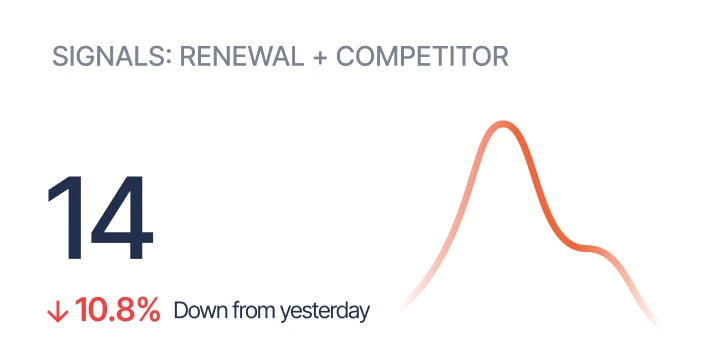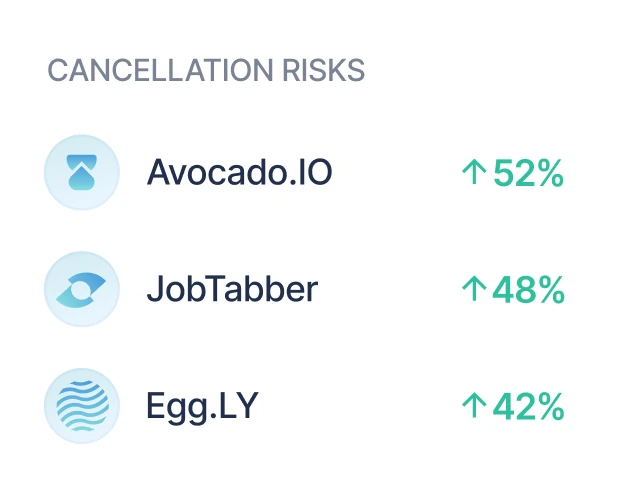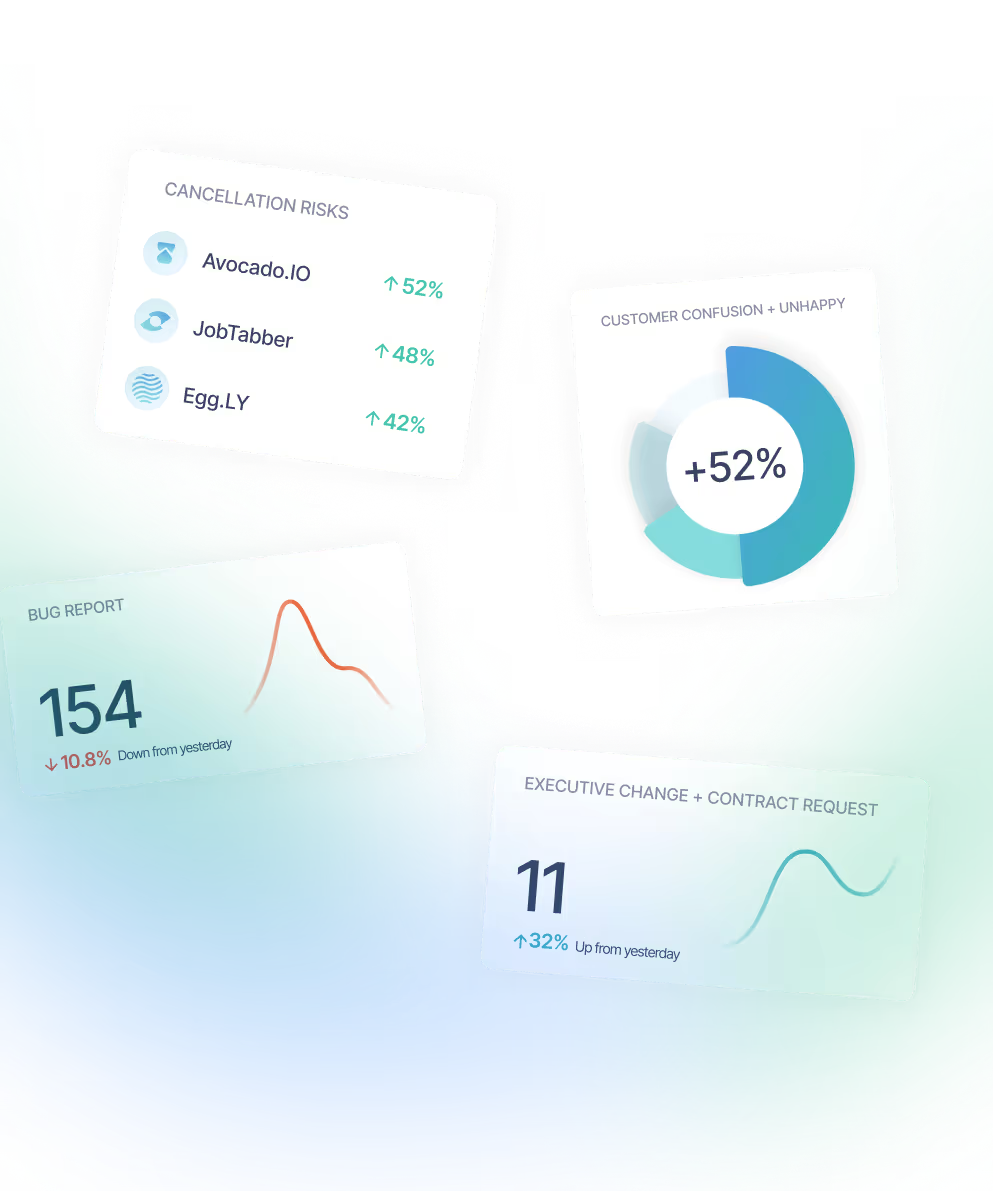Customer retention is the ultimate force multiplier in any B2B SaaS business. It involves building strong relationships with existing customers, ensuring they stay loyal to your brand, helping them use more of your product or service, and becoming advocates who bring in more customers through word of mouth. By investing in customer retention and ultimately increasing your customers' lifetime value (LTV), SaaS businesses unlock tremendous potential for growth and profitability.
Sometimes the SaaS world seems like alphabet soup. Lots of acronyms. As a reminder, Lifetime Value (LTV) is an essential metric for SaaS businesses. It measures the profitability of a customer over their entire lifetime of their contract or subscription. LTV provides an indication of how much revenue can be expected from a customer within any given point in time.
.png)
Here’s how I suggest calculating LTV. First, determine the average revenue per user (ARPU). This is calculated by dividing total revenues by the number of users over a specific timeframe. Then, divide this result by the customer churn rate for that same period — this will estimate how long each customer’s subscription lasts on average. Multiply the ARPU and estimated lifecycle together to get your lifetime value. Doing so will allow you to accurately measure customer loyalty and help you devise meaningful customer retention strategies.
Over the course of my career, I’ve learned that sometimes the best strategy is to stop doing something rather than create a new process. Making changes and implementing new processes and workflows can be time-consuming, lead to more complications, and cause confusion for your teams and customers. Simply put, here are a few things you can do to stop pissing off your customers because we can all agree that pissing off customers is a bad strategy.
Stop ignoring customer feedback
Ignoring customer feedback is more than a mistake; it’s negligence. Customer feedback is the single most valuable thing a customer can provide — arguably more than their contract value. Insights about your products or services allow you to make improvements and create better experiences for every customer and every prospective customer.
I’ve written about the perils of relying on surveys to capture customer feedback. So as a modern business leader, it’s high time you establish the channels to capture it and share it with the teams that can benefit the most. Have a system for everyone in your organization to access and analyze customer feedback — make feedback a collective reality. Democratize it.
At one company where I served as the chief revenue officer, we provided hiring software to medium-sized employers, which helped them attract job applicants and manage the interview and hiring processes. We monitored customer feedback carefully. In fact, we monitored feedback so closely that it became a part of our culture and was more or less the genesis of my current company, Sturdy.
In addition to fielding and responding to occasional issues and concerns about how our service worked, we identified patterns within the feedback: features that were missing, UI that was confusing, bugs that caused frustrations, coaching opportunities for associates, and more. These patterns in the customer feedback informed the creation of very focused rules of engagement and playbooks that ultimately increased our LTV. This lift in LTV helped us successfully sell that business to one of the largest payroll providers in the world.
Stop overpromising
Whether the account manager said “yes” when they should have said “no,” or what they said was accurate until someone else messed it up, overpromising often comes back to haunt post-sales teams. Poorly aligned expectations leave everyone involved feeling disappointed and let down. This fracture in the customer-to-business relationship is one of the leading causes of cancellations. It’s also one that often goes undocumented or improperly categorized.
Just as important as capturing the reasons why customers cancel, customer success teams should identify and document common trends and topics that indicate overpromises. By understanding the areas where false promises are made, you can enable customer-facing teams to consistently provide accurate information about the capabilities of your product and services.
Shameless plug for Sturdy — Our AI looks for Signals of overpromises in communications with your customers. This Signal detects when a customer indicates a discrepancy between the product or service they expected and the one they received.
Here are some overpromise signals that were detected in customer-business emails. Sound familiar?
"This is something that was promised in the implementation stage."
"… even excited about the features that were promised. But do feel ... underdelivered on the capabilities."
"Below is a list of things that were promised and hasn’t happened:"
"That was promised, but I still have not received anything."
"We can't use these services that were promised/promoted."
Stop doing Silly QBRs
Ok. This may seem trivial and maybe even a little silly itself, but I can’t let this one go. For those unfamiliar with the term, a Quarterly Business Review (QBR) is a look into the performance and value of your service over the past quarter. The objective of a QBR is to identify areas of improvement and offer strategies for moving the relationship with your customer forward. As the name suggests, QBRs are typically conducted at least once per quarter and most often with a typical, boring format — a presentation on some slides. The TLDR — 95% of the time, QBRs are awful. Personally, I loathe being on either end of them.
I suggest taking a page out of Customer Success Keynote Speaker & Educator Aaron Thompson’s playbook and turning QBRs into something meaningful for your customers. Use them as an opportunity to strengthen your relationship. Don’t just go through the motions. Here are some other tips from Aaron’s blog post on LinkedIn titled “Stupid Is As Stupid Does...And QBRs Are In Fact Stupid
- Make them a conversation, not a presentation.
- Come with more questions than statements.
- Don't get into SLAs, IRTs, or anything tactical. The topic du jour is their business strategy, and you are there to learn, not to teach.
- Make them 50% retrospective and 50% prospective. 100% strategic still.
- Get Creative. Much like Spotify's #Wrapped2019 (and 2020 and 2021) campaign, they demonstrate value to their millions of subscribers at the end of each year at scale.
At several of the companies that I’ve started, advised, consulted for, and worked at, we’ve used the ‘stop, start, continue’ framework. If you aren’t familiar, the ‘stop, start, continue’ framework facilitates retrospectives. The outcome is improving future work performance through open communication and collaboration. In that vein, if you stop doing these things that damage customer relationships, you will open up the possibility of developing deeper relationships with your customers based on trust and value. Implementing even one of these changes can significantly impact your customer retention strategy. Which of these are you going to commit to first?

.png)

.png)
.png)







